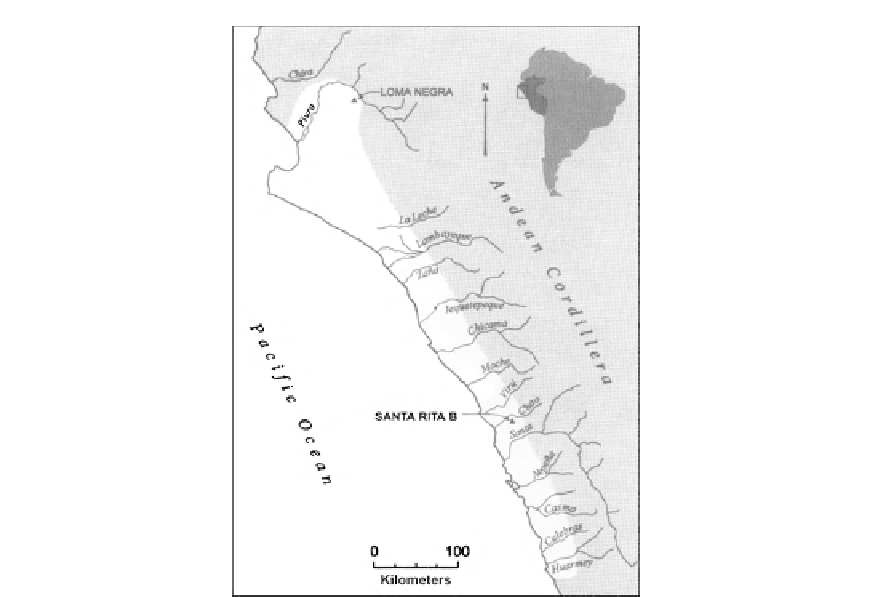Biology Reference
In-Depth Information
FIGURE 15.1
Location of the archaeological site Santa Rita B described in the case study example. Adapted
from
Gaither et al. (2008)
.
had been looted prior to excavation, Gaither and colleagues (2009) suggest differential
mortuary treatment when compared to those individuals with clear perimortem trauma.
Such bioarchaeological evidence, coupled with the high number of
Spondylus
shells and
articulated camelid remains, suggests that CA3 was utilized for highly specialized activities.
When taken in context, three primary questions surrounding the
life histories
of the individ-
uals recovered from CA3 emerged:
1.
Given the differential mortuary treatment between individuals, would isotopic analysis of
carbon and nitrogen isotopes indicate discrepancies in access to dietary resources?
2.
Might some individuals present signatures of a more terrestrially sourced diet while
others exploited marine resources?
3.
Given the differential mortuary treatment between individuals, would analysis of
strontium isotopes indicate that the individuals interred at CA3 were local to the Chao
valley? If not, where might these individuals have come from?
Archaeological Materials and Sampling
As is the case with many archaeological projects, permits were an absolute requirement so
that our team could legally remove bone and tooth samples from each skeleton and export

